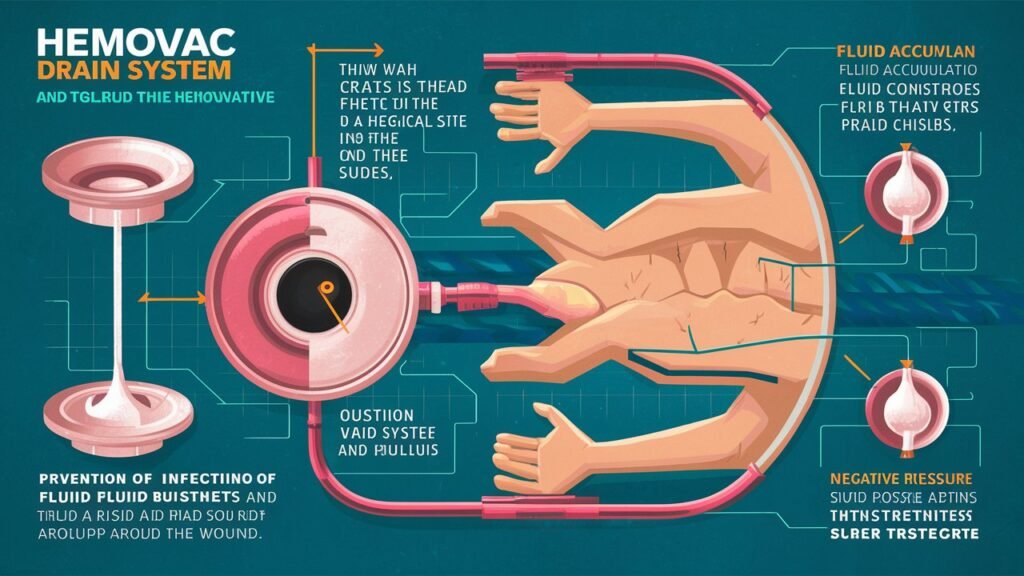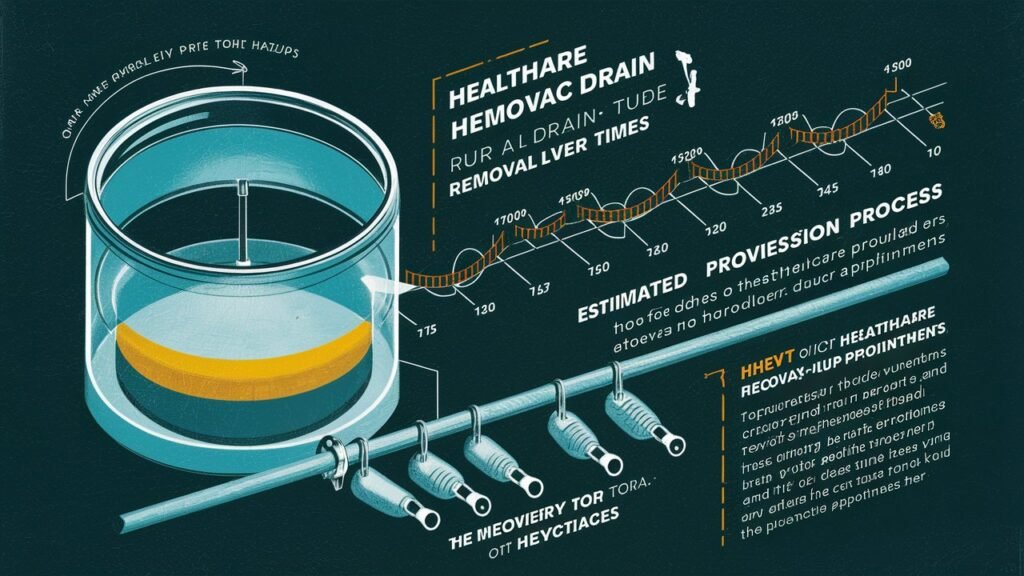Essential Guide to Hemovac Drains: Usage, Care, and Risks

Introduction
A Hemovac drain helps to eliminate free fluid from the operation area after surgery. This small, circular device with a tube controls the amount of fluid a patient retains, thereby improving their recovery process. How it works is that it operates by suction which effectively helps to remove fluids from the site of the surgery into the devise. Knowledge of Hemovac drain utilization and maintenance influences recovery and complications. In this guide you will learn everything about Hemovac drains; What they are, how to maintain them, and what to do if you encounter a problem.
Surgery is not something anyone looks forward to and having to deal with a Hemovac drain is not any better, but you do not have to worry, there is always a right way to do it. This small device efficiently prevents complications by ensuring that surgery sites do not retain fluid. Hemovac drain management is significant regardless of the extent of your surgery; whether it is major or minor surgery, patients need to know steps and techniques to manage the Hemovac drain by themselves. You will find practical advice and useful information for this part of your postoperative care here in this article.
There is a need to use a Hemovac drain postoperatively to manage the fluids that circulate in the patient’s body after this particular surgery. The mechanism of the device is to create suction to pull out any pooled fluids, which contradicts complications and aids the healing process. Daily care requirements are well, numerous but simple: it is necessary to change bands more often and to empty the reservoir with a liquid.
What is a Hemovac Drain and How Does It Work?

A healthcare provider usually applies a Hemovac drain in the post-operative process to evacuate liquids. The device thus includes a circular chamber with an outlet in a pipe. It is known that the tube should be placed in the site where collection of the fluid is anticipated while the container must be placed outside the body. As if being a negative pressure system, the Hemovac drain champs at the surgical site and pulls the fluid into the container. It helps to avoid various issues found in open wounds, including formation of new fluid collections which can cause infection and is slow in healing. The circular device enlarges as it fills with fluid, allowing you to see how much fluid it is siphoning.
How to Change the Bandage Around Your Hemovac Drain
Handle the bandage carefully to prevent infection and ensure the Hemovac drain functions properly. Start by taking your washing bowl and washing your hands with the soap in running water. Peel off the old bandage carefully and properly bin it. Rub the area around the drain site with soap and water or a saline solution using a cotton swab or a gauze pad and sweeping in one direction only. Pat the area dry and look for the ds of infection like red inflammation or different types of discharge. Dress the wound with a new clean bandage and fasten it with medical tape. Wash your hands to maintain hygiene and prevent transferring bacteria from the mouth to your hands.
How to Empty Your Hemovac Drain
It is good practice to ensure that you get in touch with your Hemovac drain frequently for you to be able to monitor the level of vacuum frequently and also you need to ensure that you empty it as often as possible to ensure that you eliminate the fluids that have accumulated therein. To start with, take your bathing utensil, wet it and then apply some soap on your hands. Take off the plug at the top of the drain and transfer the fluid into a measuring cup. Wipe freely accessible plug area with an alcohol swab, and flatten the drain flat before reinstalling the plug. Ensure that the tubing stays unplugged, and reconnect the drain to your garments instead of your skin. Record the amount of fluid you discharge along with the date and time for review. Dispose of the accumulated fluid and wash your hands.
When Will My Hemovac Drain Be Removed?

The healthcare provider determines the exact time for removing the Hemovac drain based on the fluid volume and your progress in the recovery process. Healthcare providers usually evaluate the condition, type, and amount of the fluid to decide when to remove it. The rate of the fluid output must decline daily as the body goes on to the recovery process. You must adhere to your provider’s directives and make all the follow-up appointments to monitor and remove the drain appropriately.
What Are the Risks of a Hemovac Drain?
In general, Hemovac drains are not toxic, however, there’s always a risk to longevity. The following are the symptoms that you are likely to develop; pain or tenderness at the area where the drain is inserted you may also find it uncomfortable or difficult to lie on the side that has the drain. Other risks are leaks, dislodging of the tubes by accident, breakage of the tubes, or injury of the tissues in the area being operated on. Any wall or structure at this level of drainage can be infected and the disease can spread internally. One must oversee the site where the drain is located, especially for any changes that may occur and to resolve any of these changes.
FAQ’s
What should I do if the site of my Hemovac drain gets wet?
Change the bandage immediately to maintain cleanliness and prevent infection.
How often should I empty my Hemovac drain?
Empty the drain when it is half full or every 4 to 8 hours.
When can I expect my Hemovac drain to be removed?
Your provider will remove the drain once the fluid output decreases and they assess your recovery.
What are common signs of infection around the drain site?
Redness, swelling, unusual drainage, or increased pain are signs of infection.
What should I do if my Hemovac drain becomes blocked?
Contact your healthcare provider immediately for guidance on resolving the blockage.
Conclusion
Studies show that effective management of Hemovac drain is important in order to enhance postoperative patients comfort. Thus, it is possible to state that with the knowledge of how drain works, how to clean it, and what risks it may pose understanding will allow enhancing the postoperative care. Correct bandage changes and the procedure followed while emptying the fluid also reduces on the complications and fosters on healing. It is always important to adhere to a healthcare provider’s recommendations and consult one if there are any difficulties encountered. So knowing the specifics of Hemovac drain use and simple nursing care, you will be able to positively impact your recovery process.



